Power steering pump, petrol engine
| Power steering pump, petrol engine |
Besides the pump elements, the pump comprises a control valve for regulating the flow and an overflow valve.
|
||||||||||||||||
| Pump operation |
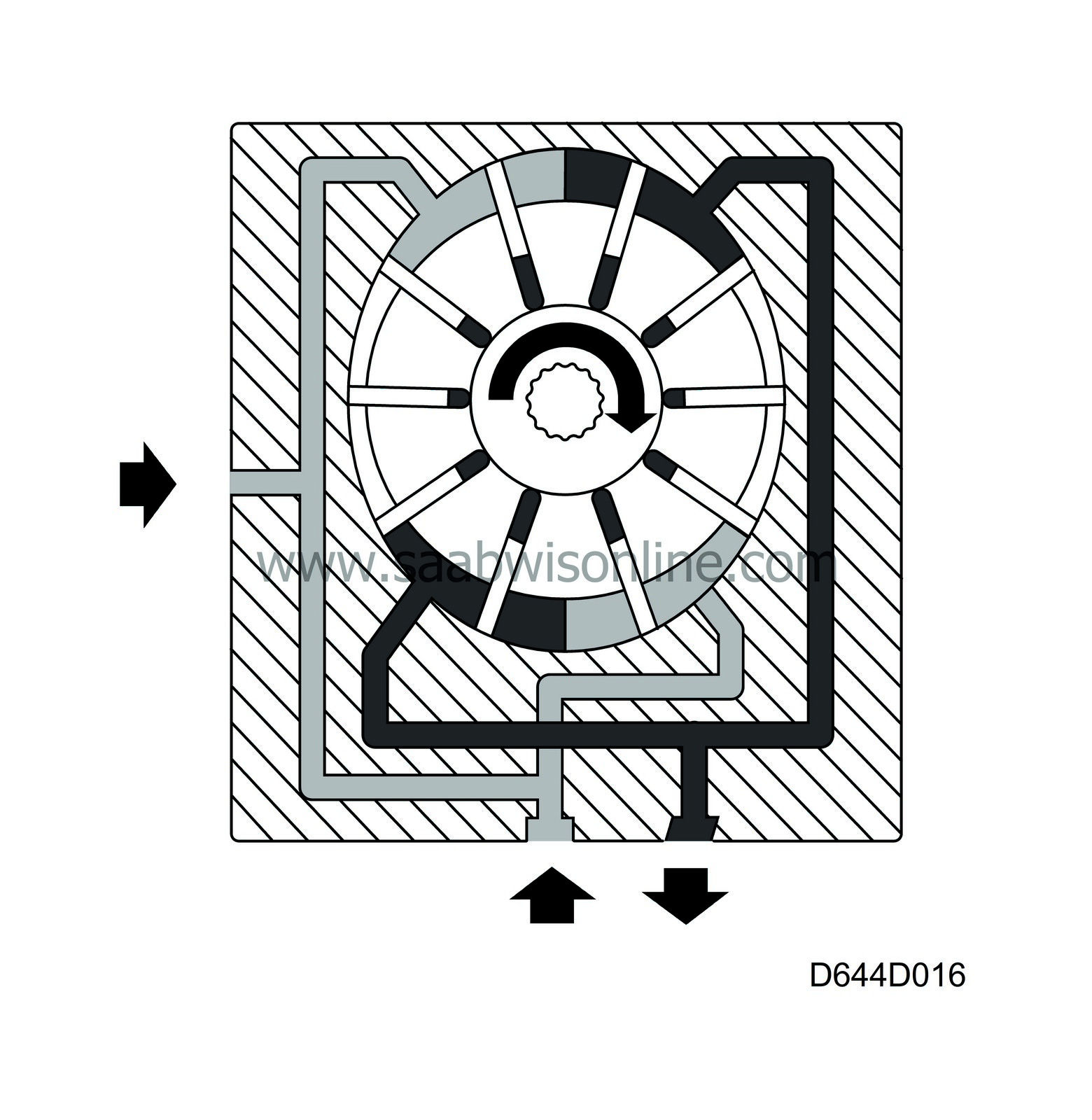
The pump element comprises a rotor with a number of slots, a vane for each slot, a pump ring and two end plates with inlet and outlet ports for the hydraulic fluid.
When the rotor is revolving, the oval shape of the pump ring causes an increase and decrease in the volume between the vanes twice per revolution. Inlet ports lead to the areas where the volume increases and outlet ports from the areas where the volume decreases, producing a pump effect. Besides being forced outwards by centrifugal force, the vanes are also pressed outwards towards the pump ring by the pressurized hydraulic fluid entering the slots inside the vanes.
| Pressure and flow control |
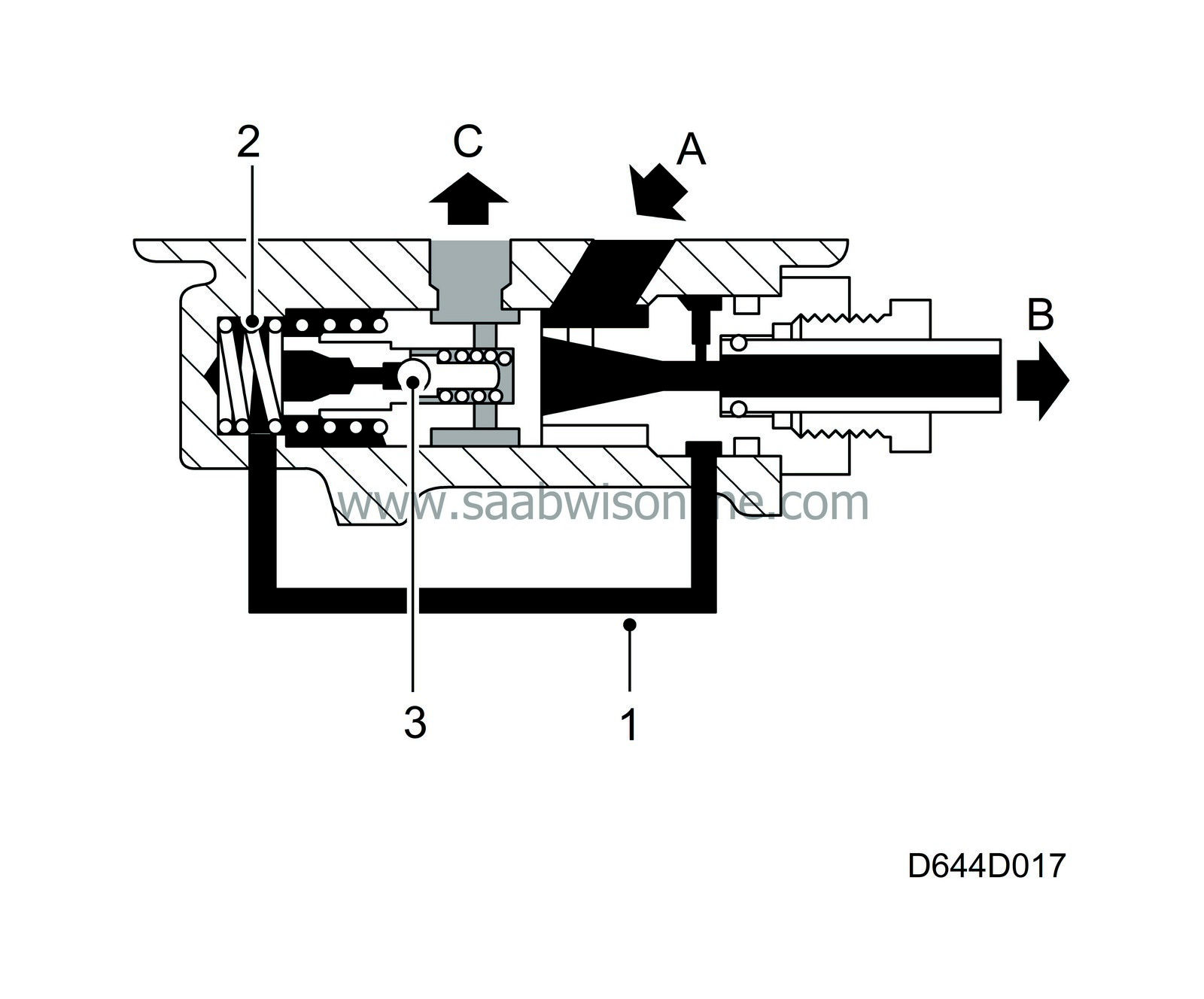
| 1. |
Connecting line
|
|
| 2. |
Spring
|
|
| 3. |
Overflow valve
|
|
| A. |
From pump delivery side
|
|
| B. |
To steering gear
|
|
| C. |
To pump suction side
|
|
The control valve regulates a constant flow from the pump irrespective of the engine/pump speed.
One side of the control valve is in direct contact with the delivery side of the pump (A). The outlet (B) from the pump incorporates a restriction from which a connecting line (1) leads to the other side of the valve, which is fitted with a spring (2). When not actuated, the valve is pressed against the outlet side.
Inside the control valve there is an overflow valve (3), which is affected by the hydraulic pressure on the spring side of the control valve at high pressure.
A certain amount of hydraulic fluid must pass through the valves (A) and (C) for the control valve to be able to operate, but not when the steering wheel is at full lock. The pump delivers a maximum pressure of approximately 10 MPa (100 bar) and a maximum flow of approximately 6 litres per minute.
| Steering and parking at low engine speed |
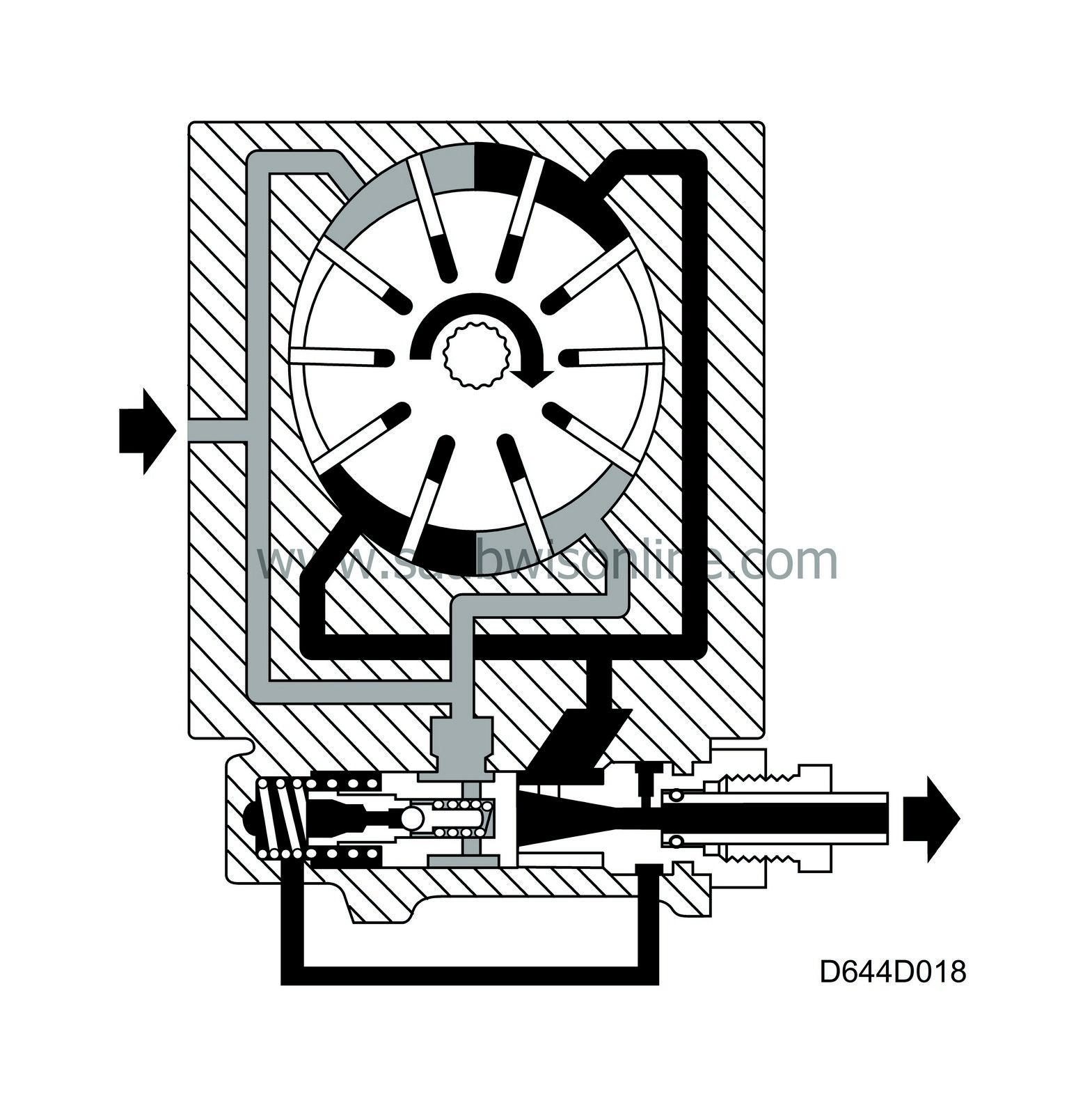
The pressure delivered by the pump (shaded portion) is reduced slightly by the restriction in the pump outlet.
This reduced pressure is lead to the spring side of the control valve, creating a slight pressure difference between the two sides of the valve. Owing to the low pump speed, however, the difference in pressure is not sufficient to actuate the valve.
| Steering at high engine speed (pump in flow control mode) |
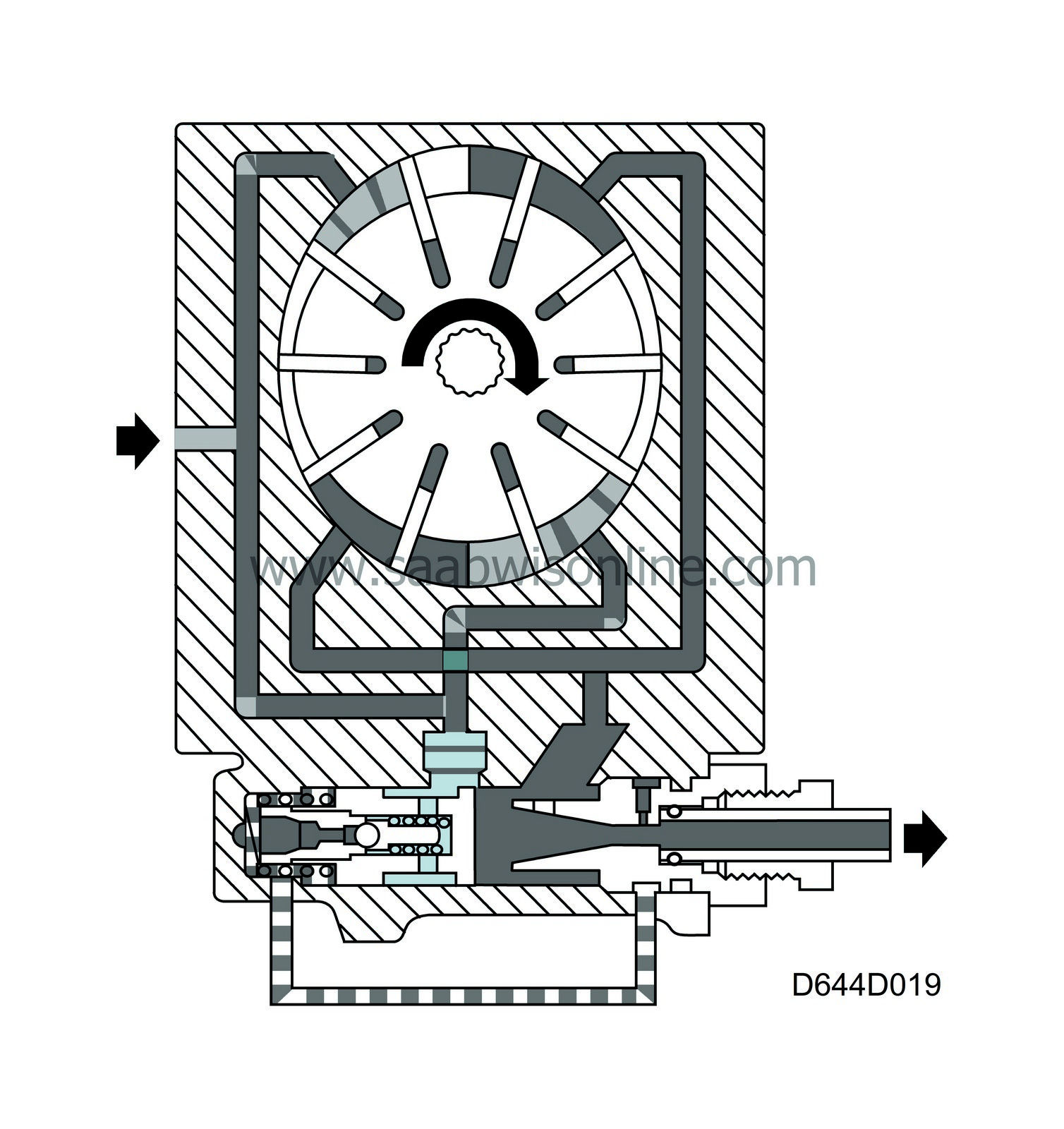
An increased engine speed increases the flow of hydraulic fluid in the pump and the flow velocity of the fluid is also increased by the restriction in the pump outlet. This reduces the pressure in the connecting line, causing the pressure on the spring side of the control valve to be lower than the outlet side. This makes the control valve compress the spring. A port to the suction side of the pump opens for a certain internal recirculation so that a constant flow is obtained from the pump, irrespective of the engine/pump speed.
| Steering wheel turned to full lock |

Pump speed in this case is often low. When the steering wheel is turned to full lock the control valve of the steering gear closes. The flow of fluid from the pump will then be zero.
The resulting high-pressure is directed via the connecting line to the spring-loaded side of the control valve. The pressure opens the overflow valve and allows the fluid to pass to the inlet side of the pump. The pressure difference across the control valve forces it to move against the spring and so open the port for recirculation of the full delivery flow from the pump.
The predetermined maximum pressure is maintained as long as the control valve remains closed.

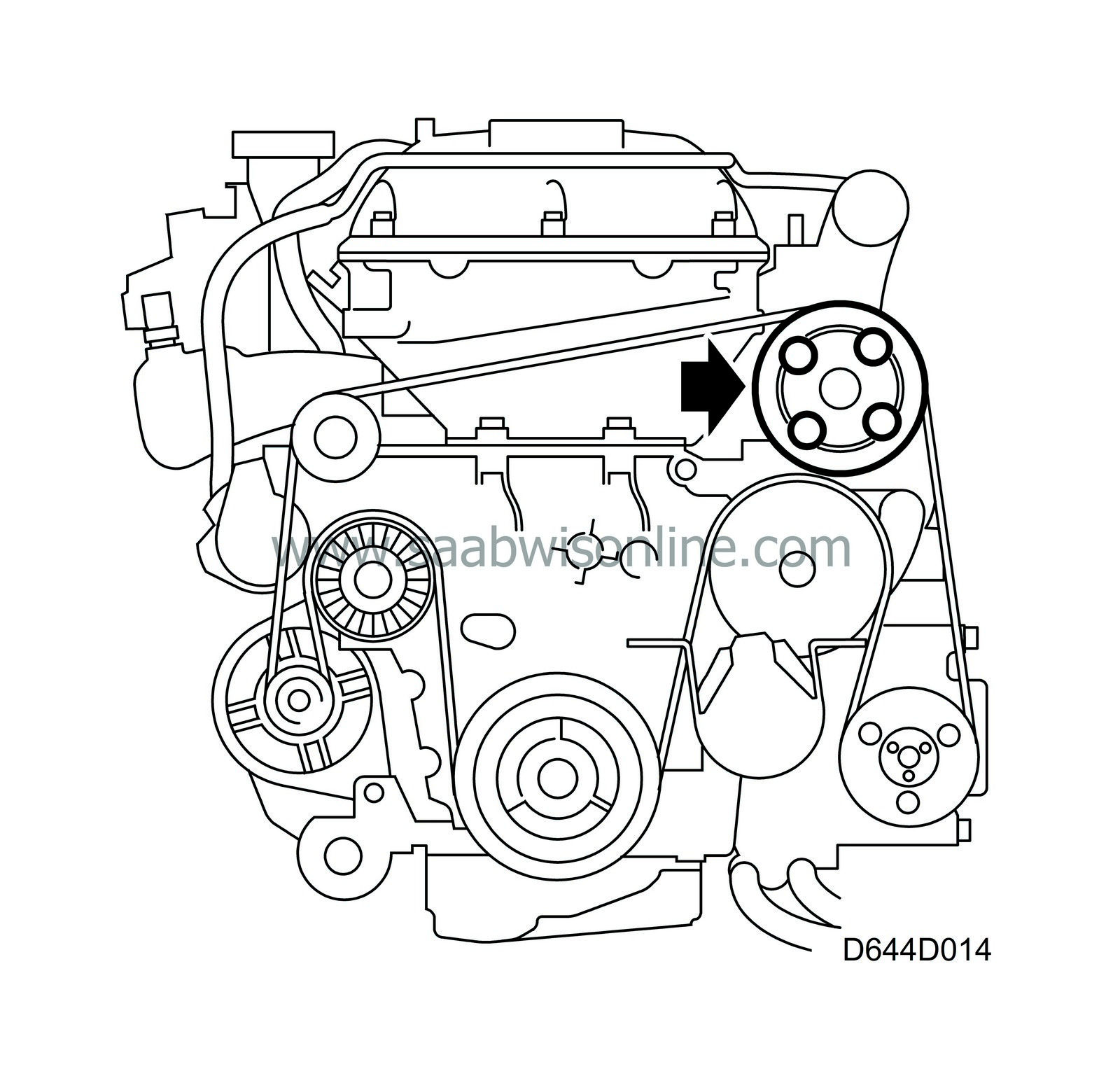
 Warning
Warning

